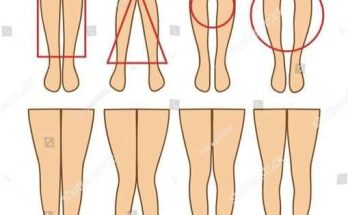Discover the causes, symptoms, and treatments of fatty liver disease. Learn how lifestyle changes can help prevent and manage this condition.
Fatty liver disease, medically known as hepatic steatosis, occurs when excess fat accumulates in the liver. This prevalent health issue can stem from various factors, including obesity, unhealthy lifestyle habits, and metabolic disorders. Understanding its causes, recognizing the symptoms, and adopting effective management strategies are crucial steps toward maintaining liver health.
What Is Fatty Liver Disease?

This disease is characterized by the buildup of fat in liver cells, which can impair liver function over time. While the liver naturally contains some fat, excessive amounts—defined as more than 5% of the liver’s weight—can lead to inflammation and damage. If left unaddressed, this condition may progress to more severe liver diseases, such as cirrhosis or liver failure.
Types of Fatty Liver Disease
There are two primary types of fatty liver disease:
- Nonalcoholic Fatty Liver Disease (NAFLD): This form occurs in individuals who consume little to no alcohol. It’s often associated with obesity, insulin resistance, high blood sugar, and elevated levels of fats in the blood. NAFLD can progress to nonalcoholic steatohepatitis (NASH), a more severe form that involves liver inflammation and damage.
- Alcoholic Fatty Liver Disease (AFLD): As the name suggests, AFLD results from excessive alcohol consumption. The liver breaks down most of the alcohol consumed, but this process can produce harmful substances that damage liver cells, promote inflammation, and weaken the body’s natural defenses.
Common Causes and Risk Factors

Several factors can increase the risk of developing fatty liver disease:
- Obesity: Excess body weight, especially when concentrated around the abdomen, is a significant risk factor.
- Type 2 Diabetes: This condition is often linked to insulin resistance, which can contribute to fat accumulation in the liver.
- High Cholesterol and Triglycerides: Elevated levels of fats in the blood can lead to fatty deposits in the liver.
- Metabolic Syndrome: A cluster of conditions—including increased blood pressure, high blood sugar, excess body fat around the waist, and abnormal cholesterol levels—raises the risk of fatty liver disease.
- Rapid Weight Loss: Losing weight too quickly can stress the liver and lead to fat accumulation.
- Malnutrition: Poor nutrition and low-protein diets can contribute to liver fat buildup.
Recognizing the Symptoms
It often presents no symptoms, especially in its early stages. However, as the condition progresses, individuals may experience:
- Fatigue: A persistent feeling of tiredness or weakness.
- Abdominal Discomfort: Mild pain or a sense of fullness in the upper right abdomen.
- Unexplained Weight Loss: Losing weight without changes in diet or exercise.
- Jaundice: Yellowing of the skin and eyes, indicating advanced liver issues.
- Swelling: Edema in the legs and abdomen due to fluid buildup.
Effective Management and Treatment for Fatty Liver Disease

Addressing fatty liver disease primarily involves lifestyle modifications:
- Adopt a Healthy Diet: Focus on a balanced diet rich in fruits, vegetables, whole grains, lean proteins, and healthy fats. Reducing the intake of sugar, refined carbohydrates, and saturated fats can help decrease liver fat.
- Engage in Regular Exercise: Aim for at least 150 minutes of moderate-intensity aerobic activity per week, such as brisk walking or cycling. Physical activity helps reduce liver fat and improves overall health.
- Achieve and Maintain a Healthy Weight: Gradual weight loss can significantly reduce fat accumulation in the liver. Aim to lose 1-2 pounds weekly to avoid stressing the liver.
- Limit Alcohol Consumption: Reducing or eliminating alcohol intake can prevent further liver damage, especially in AFLD cases.
- Manage Underlying Health Conditions: Controlling diabetes, high cholesterol, and other related conditions can help prevent the progression of fatty liver disease.
This disease is a growing concern, but with informed lifestyle choices and proactive management, its progression can be halted or even reversed. Regular medical check-ups, a nutritious diet, consistent physical activity, and mindful habits are essential components of maintaining liver health and overall well-being.



